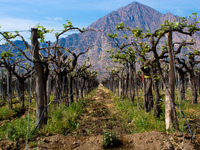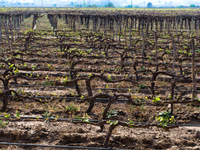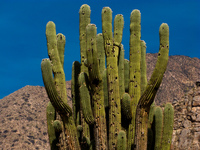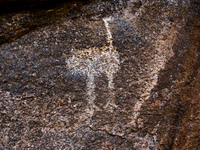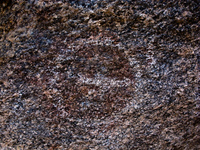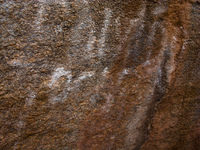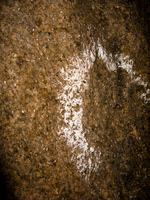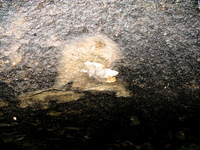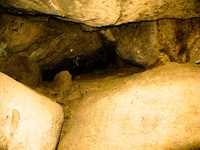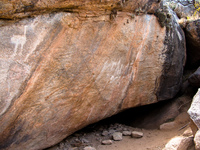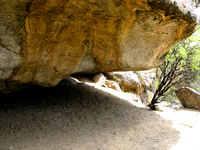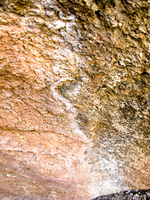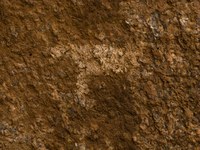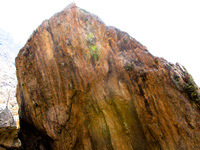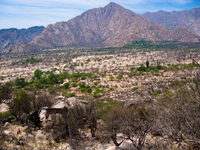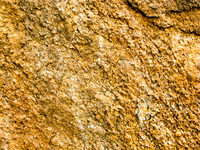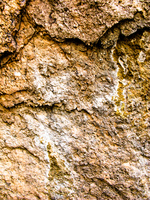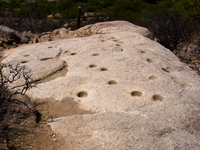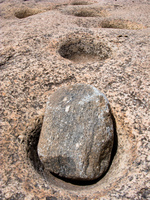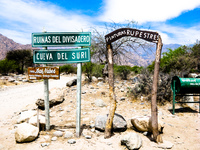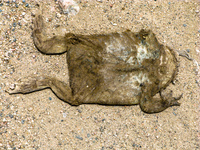pinturas rupestres
A rock painting is all drawing or sketch prehistoric existing in some rocks and caves. The term "rock" from the Latin rupestris, And the latter from rupes (rock), but also stands for primitive. So, strictly speaking, rock would refer to any human activity on walls of caves, huts, rock shelters and even cliffs or gulliesEtc.. From this aspect, it is virtually impossible to isolate other manifestations pictorial representations of prehistoric art as engravings, sculptures and petroglyphs, Engraved on stone by percussion or erosion. Being protected from erosion by the nature of the medium, the rock paintings have withstood the passage of centuries.
This is one of the oldest art forms which record, since, at least, there is evidence dating to 40,000 years old, ie during the last glaciation. Moreover, although the rock painting is essentially a primitive spiritual expression, it can be placed in almost all periods of the history the human being and in all continents except for Antarctica. The earliest manifestations, the most relevant are in Spain and France. They correspond to the transition period from the Paleolithic to the Neolithic. The first of the periods mentioned are the extraordinary paintings Altamira CaveLocated in Santillana del Mar, Cantabria (Spain).
These paintings - and the other associated manifestations - reveal that human beings since prehistoric times, organized a system of artistic representation, it is believed, in general, which is related to practices of magic-religious character to promote the game. Given the chronological and geographical scope of this phenomenon is difficult if not impossible, to generalize. For example, in some cases the works are given cave in remote areas of the cave or in places not readily accessible, there are others, however, in which they are visible and clear and unobstructed areas. When the decoration is removed from the sites occupied by the settlement is the concept of latent nature sanctuary which emphasizes its religious significance or out of the ordinary. In cases where the painting is in domestic contexts is necessary to rethink this notion and consider the full integration of art, religion and daily life of primitive man.
In the cave paintings are symbolized humans, animals (mostly female and they believed to improve fertility of the animals painted) and the environment and represents the normal behavior of the authorities and their interaction with the creatures of environment and their deities. Among the key figures in these graphs are present images bison, horses, mammoths, deer and reindeer, While the marks of hands also occupy a significant percentage. Often injured animals are shown by arrows. The grounds and materials that were developed with various rock paintings are very similar, despite the thousands of miles away and thousands of years in time. All human groups that depended on hunting and gathering fruit made this kind of work painting.
In the cave painting is usually used one or two colors, including some blacks, reds, yellows and ochres. The colors were also called vegetable pigments like charcoalOf fluids and body waste such as feces, mineral compounds such as hematite, clay and manganese oxide, mixed with an organic binder resin or fat.
The cave are located entirely below ground and therefore are in almost complete darkness. It is believed that the old artists are aided with small stone lamps filled with animal fat.
Colors are smeared directly with the fingers, but also could spit the paint onto the rock, or blowing with a reed thin lines of paint. Sometimes pigments powder rubbed directly on the wall and also they could be mixed with a binder and applied with brushes or rods rudimentary. Branches were used as pens and balls burned mineral dye bonded with resin. Sometimes they took advantage slopes and crevices of the wall to give the illusion of volume and realism.
Often animal silhouettes are marked or scraped to generate incisions and thus produce a realistic outline of notoriety in the rock.
The age of the paintings remains in many archaeological sites as a big question, because the methods for determining it, such as the Carbon-14Can easily lead to erroneous results for the contamination of the material evaluated, and also because the caves and rock faces have lumps that are lodged in the dirt residues from various eras. To determine the date of its creation is used more conventional techniques such as image date by the subject matter. For example, reindeer drawn in the Spanish cave Cueva de las MonedasWhose origin corresponds to the final estimate glaciation. The paintings deposits occur most frequently among France and SpainBecause in these areas the man found a best place to survive environmental changes and population growth. lopez orange kike mola

